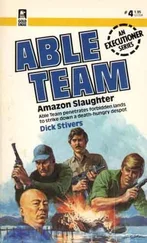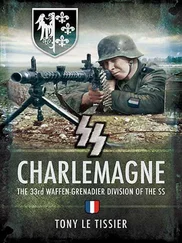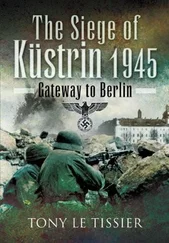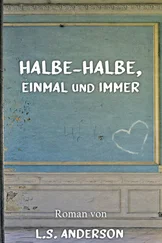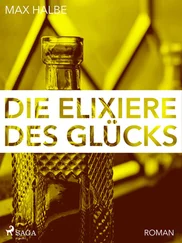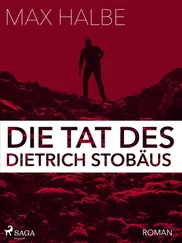There were no officers to give orders in these chaotic circumstances. We had no maps and no plan how to get out of this Halbe mousetrap. At last a sergeant-major shouted: ‘Machine guns and Panzerfausts up front.’
We fired at the windows of the buildings from which we were being fired at and, under cover of our fire, a few grenadiers stormed the buildings. Some dull hand-grenade explosions came from the buildings and we had found our cover. We immediately started moving the wounded off the street into the cellars.
The blazing night was filled with the horrible cries of the wounded, the bangs of exploding ammunition from the burning tanks, bursts of machine-gun fire, rifle shots and Russian gunfire.
We saw a wounded comrade who had had a leg shot off and were trying to pull him to safety by his arms as enemy rifle bullets whistled past. Then one of our tanks caught him with its tracks when it was turning and squashed him flat.
A medical orderly appeared to take over the care of the wounded whom we had carried in and said to us: ‘Make sure that you get through. I’ll stay with the wounded and hand them over to the Russians.’ We silently shook his hand and made our way out of the back of the building, feeling safer when we reached the edge of the woods.
We soon reached the Lübben–Königs Wusterhausen autobahn, which we crossed at about midnight on 29 April. At last we reached the edge of the woods, where we found foxholes that had only been abandoned a few hours before. A small building stood on the far side of the woods – I don’t know whether it was a forest warden’s lodge – from which a white flag was waving. It was the first white flag that we had seen. This apparently idyllic scene was abruptly disturbed when about 30 Russians rushed out of the building to seek cover in the adjacent woods. We engaged them with machine-gun fire at a range of about 150 metres, but what stunned and left us shattered, was a naked and raped girl with a head wound lying about 100 metres left of the building and a soldier in German uniform hanging from a pine tree next to her. We were struck dumb, staring silently at the two dead persons, at the raped girl and the hanging soldier, who looked at us with glazed eyes. We cut down the dead man and went on slowly, each with the firm resolve that it was better to die than to be taken prisoner. We carried on under the cover of the woods as Russian planes crossed over above searching for us. [29] Wilke, Am Rande der Strassen , pp. 65–9.
Horst Wilke confirmed this last incident:
This building in the woods must have been the Massow forest warden’s lodge, which had been burnt out during the fighting. I myself went past there at about 0530 hours on 1 May, and several timbers were still glowing. The track going past it was being used by the Russians as a supply route to the autobahn. The positions were full of dead soldiers and civilians. A bit aside from the track lay a naked girl of about 12–15 years old, and next to her a dead German soldier who still had some rope around his neck. We had a good view of the terrain with the rising sun. [30] Ibid ., p. 70.
Other units had yet to pass through Halbe. The SS-second lieutenant of Battlegroup Becker continued his account:
We only took up temporary positions on 29 April, but the Russians kept approaching hesitantly. We had captured two machine guns with a quantity of ammunition the previous day, and were amazed that the Russians had mainly German weapons. We went on in the afternoon and reached the outskirts of Halbe. It really was frightful. I have never seen so many dead, though unfortunately most were German. The Russians had dug in their T-34s to try and prevent the cauldron being breached, but we still had some Königstigers on our side, so it was possible to break through their positions. Later, in Russian captivity, we were told that 55,000 Germans and 5,000 Russians fell at Halbe on 29 April.
We were under constant attack from low-flying aircraft, but by 1700 hours Halbe was behind us as we followed an avenue to the west. I was wounded in the left thigh by a low-flying attack, which was no pleasant birthday present, but I carried on with an emergency dressing. We marched on all night towards Beelitz. We came to an artillery range, where there were Russian snipers in the trees. By this time we had been sharply reduced to about seventy men.
We were suddenly fired on again that afternoon from behind and everyone started running. I could only get at most thirty men into position. Heavy mortar fire drove both friend and foe under cover. I was wounded again by a mortar splinter in my lower left leg; a splinter went in above the ankle between the shin and fibula. We also came under fire from Stalin-Organs during the night of 30 April–1 May. [31] Ibid ., pp. 83–5.
And an armourer with V SS Mountain Corps reported:
We reached the village of Halbe at about 1300 hours on 29 April. On the through road towards Baruth we came up against a Russian anti-tank barrier, where hundreds of German dead lay, sometimes two or three on top of each other, including some police in their green uniforms. It was horrible. The anti-tank barrier was blown up. We had a few tanks with us, including Tigers, which formed our spearhead, drawing many civilians, including some French prisoners of war, along with the big crowd. [32] Ibid ., p. 70.
The chaos in the original pocket had now become even worse, with continuous attacks from Soviet aircraft, mortars and rockets. That evening several composite groups tried to break out once more, together with countless refugees and uniformed marauders. This time the route was to be via the forest warden’s lodge at Massow, where only weak Soviet forces were thought to be, but this was a fallacy, and all these groups were wiped out. [33] Ibid ., p. 57.
Those elements of the Panzergrenadier Division Kurmark which had formed the northern wedge, and covered the main breach from the north, fought hard to get through north of Halbe, then followed the Halbe–Teupitz road to the autobahn. With them were some elements of the 10th SS Armoured Reconnaissance Battalion Frundsberg which had been holding the perimeter in the Köris area, but this battalion’s 3rd Company had been cut off during the break-out by the Russian forces filling the woods and only very few of them were to survive.
Further north, near Töpchin, SS-Second Lieutenant Porsch’s Tank-Hunting Company Dora II met its fate, as he later recorded:
Our little gang was getting smaller and smaller, again and again a few good comrades were being left lying. The dead had to be buried quickly, as we had to keep on fighting and pushing forward without rest.
Then we were trapped in a clearing between Märkisch Buchholz and Töpchin, an enemy battalion having caught us in its clutches and surrounded us. We held out against all attacks for two days with our 42 men and then mounted a final counterattack. Without a round in the chamber, the last eleven climbed out of their holes and followed me with my Wolchow club raised high against the attacking Soviets. We were then overcome in close-quarter fighting, my Wolchow club breaking on a Russian helmet, and the fight was over.
At my request, the Russian regimental commander, who had personally led the last attack against our little gang, granted me three hours in which to bury our dead. We dug a long pit and laid them down, one after another, with their faces to the east towards the rising sun, as all the dead of my company were put to rest. When we went to lay their weapons beside them, as was the custom in our unit, some officers protested, but with a wave of his hand their commander, an elderly colonel, silenced them and let us continue. Once we had smoothed over the grave, we formed a half-circle in front of it and sang our farewell tribute with hoarse voices.
Читать дальше

